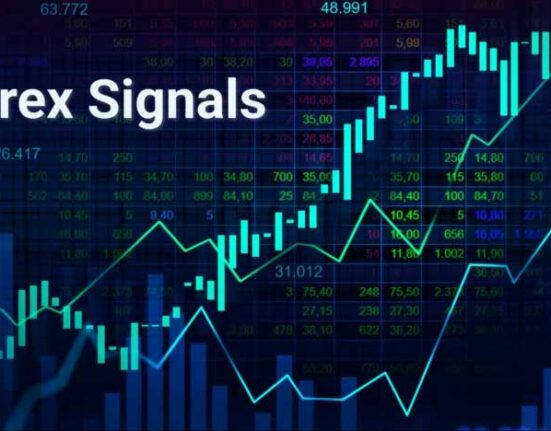Forex trading signals have become an indispensable tool for traders looking to enhance their strategies and maximize their profits. This article delves into the intricacies of forex trading signals, providing a comprehensive guide for both novice and experienced traders.
Understanding the Basics of Forex Trading Signals

Forex trading signals are essentially trade recommendations that alert traders to potentially profitable trade opportunities. These signals can be generated through various means, including technical analysis, fundamental analysis, or a combination of both.
Key Features:
- Entry and Exit Points: Signals typically indicate when to enter or exit a trade.
- Stop-Loss and Take-Profit Levels: They also provide guidance on setting stop-loss and take-profit orders to manage risk.
- Currency Pairs: Information about which currency pairs to trade.
How Forex Signals Can Enhance Your Trading Strategy

Utilizing forex trading signals can significantly streamline the trading process and improve your decision-making. Here’s how:
Benefits:
- Time Efficiency: Signals save time by eliminating the need to conduct extensive market analysis.
- Expert Insights: They offer the expertise of seasoned traders, which can be invaluable for beginners.
- Consistency: Help maintain a disciplined approach to trading by following a set strategy.
Types of Forex Trading Signals: Manual and Automated

Forex trading signals can be broadly categorized into two types:
Manual Forex Signals
These are generated by human traders, often experts with years of experience in the market.
Pros:
- Human Judgment: The ability to interpret complex market conditions.
- Adaptability: Can adjust to unforeseen market changes.
Cons:
- Time-Consuming: Requires constant monitoring and analysis.
- Subjective: Can be influenced by personal biases.
Automated Forex Signals
These are generated by algorithms and trading bots, relying on predefined criteria and market data.
Pros:
- Speed: Instantaneous signals without human delay.
- Consistency: Unaffected by emotional biases.
Cons:
- Lack of Flexibility: Cannot adapt to unexpected market conditions.
- Over-reliance on Data: May fail in highly volatile or unpredictable markets.
Key Components of Reliable Forex Signals Services

When choosing a forex signals service, consider the following essential components:
Transparency
- Clear Performance Records: Historical data showing past performance.
- Open Communication: Direct contact with analysts or support teams.
Accuracy
- High Win Rate: A consistent track record of profitable trades.
- Risk Management: Clear guidelines on stop-loss levels to minimize potential losses.
User-Friendly
- Ease of Use: Simple interface and easy-to-understand signals.
- Compatibility: Accessible via multiple platforms, including mobile, desktop, and apps.
Evaluating the Accuracy and Efficiency of Forex Signals

To ensure you’re getting high-quality forex signals, consider the following evaluation criteria:
Performance Metrics
- Win Rate: The percentage of successful trades.
- Risk-Reward Ratio: The balance between potential gains and losses.
Reviews and Testimonials
- User Feedback: Positive reviews from other traders.
- Expert Endorsements: Recommendations from respected figures in the trading community.
Risks and Rewards Associated with Forex Trading Signals

Forex trading signals offer both significant potential rewards and inherent risks. Understanding these aspects can help you make informed decisions.
Rewards:
- Increased Profitability: Access to expert recommendations can boost your trading success.
- Educational Value: Learning from signals can enhance your own trading skills over time.
Risks:
- Over-reliance: Depending solely on signals can hinder your ability to analyze markets independently.
- Signal Quality: Not all signal providers are trustworthy or accurate.
Comparative Table: Manual vs. Automated Forex Signals
| Feature | Manual Forex Signals | Automated Forex Signals |
|---|---|---|
| Speed | Slower, dependent on human analysis | Faster, instant execution |
| Adaptability | High, can adjust to market changes | Low, follows preset algorithms |
| Bias | Can be subjective | Objective, no emotional bias |
| Complexity | May involve detailed analysis | Simpler, relies on preset criteria |
| Consistency | Variable, depends on the trader’s skill | Consistent, follows predefined rules |
In conclusion, forex trading signals can be a powerful tool in your trading arsenal, provided you choose a reliable service and use them judiciously. By understanding the different types of signals, evaluating their accuracy, and being aware of the associated risks and rewards, you can significantly enhance your trading strategy and achieve greater success in the forex market.








Leave feedback about this